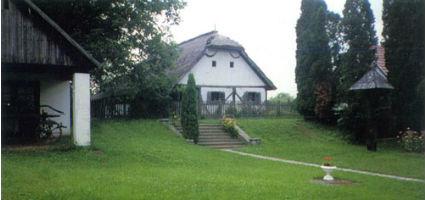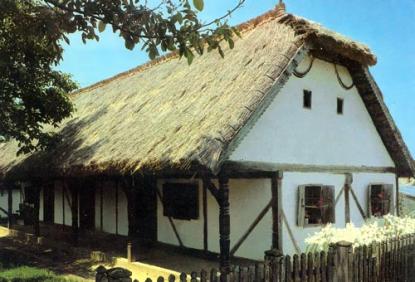2024. November 22. Friday
Géza Kiss Ormánság Museum and Region House - Sellye
 |
Address: 7960, Sellye Köztársaság tér 6.
Phone number: (73) 480-245, (73) 480-201
Opening hours: 01.11-31.03.: Tue-Sun 10-14
01.04-31.10: Tue-Sun 10-16 (On prior notice: beyond the opening hours as well) |
Museum tickets, service costs:
|
Ticket
|
200 HUF
|
|
|
Group ticket
|
150 HUF
|
The visitors are welcomed by a bell tower built around 1890 in Gyöngyfa. In the back of the courtyardthere is a replica of the footed house of Csányoszró, which was built in the traditional style in 1968. There are 3 rooms in the house: (room- kitchen- lard). The interiour reflects an archaic state: it strives to recall the middle of the 19th century. The items of the room (corner bench, table, carpentered bin etc.) also protect an archaic technology. The kitchen and the lard contain utility tools that teach us about the everyday life of those who lived in the Ormánság.

The stable is awaiting visitors without animals. In the hay storing stable agricultural instruments (plow, harrow, etc.) and a cart are seen. A shadoof stands beside the house. Close to the fence we can find the wheet store transported here from Zaláta. This building also functioned as a dwelling house for young couples (just like the attics in other villages).
The buildings and eqipments of the property provide a thorough representation of the life-style in the region and reflect the times of the 1860'ies (after the disunion of large families and the liberation of the serfs).
A replica of the smithery of Ödön Fábián stands beside the peasant property.

The stable is awaiting visitors without animals. In the hay storing stable agricultural instruments (plow, harrow, etc.) and a cart are seen. A shadoof stands beside the house. Close to the fence we can find the wheet store transported here from Zaláta. This building also functioned as a dwelling house for young couples (just like the attics in other villages).
The buildings and eqipments of the property provide a thorough representation of the life-style in the region and reflect the times of the 1860'ies (after the disunion of large families and the liberation of the serfs).
A replica of the smithery of Ödön Fábián stands beside the peasant property.
